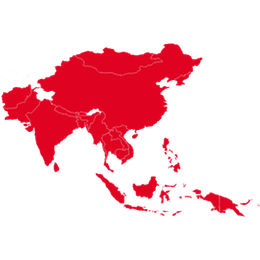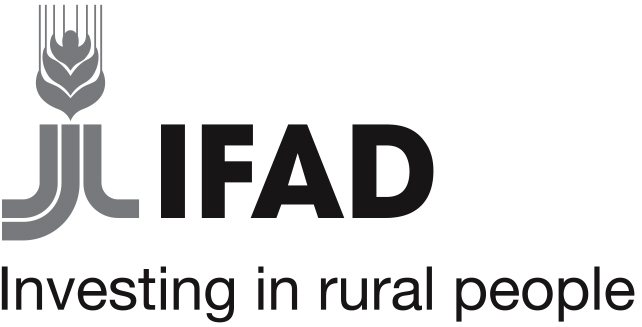Supporting business growth for Bangladeshi char-area producers
"Producers saw higher income, improved product quality and value, and a wider range of income-generating activities."
BACKGROUND
Small-scale producers on newly-occupied char areas of Bangladesh needed both physical connections and market relationships for their businesses to thrive. By forming market groups, they were able to access credit and take part in commercial value chains from a strong, unified position.
WHAT’S INVOLVED
Management skills development
Marketing Management Committees (MMC) were formed as a means of improving access to markets and finding better ways to manage them. Once formed into committees, members were in a position to receive intensive group training in management.
Value-chain integration
Groups and committees benefited from collective bargaining power and could be integrated with the wider value chain of production, processing, marketing and selling goods and produce.
Poverty alleviation
As a result of the project’s activities, producers saw higher profits, improved product quality and value, and a wider range of income-generating activities to help diversify their businesses.
EXPLORE THIS SOLUTION
The char-area income solution project can offer
- Lessons on implementing a group-based support project ‘from scratch’ on newly-formed lands.
- Insights on building market groups that nurture businesses and local economies.
Show Full Solution
Summary
In order to thrive, poor primary producers in the reclaimed riverbed lands (char areas) of Bangladesh were in need of both infrastructure development and formation of social capital.
This solution focused on the social capital aspect, supporting production and income-generating activities and developing market groups, ultimately increasing access to markets, financial services, and technology, as well as improving the performance of the markets themselves.
Members of the market groups benefit from a stronger trading position and access to credit, allowing farmers to make crucial investments in crops at the right time of year. The solution also offered training and value-chain integration, better connecting producers with the wider agro-business landscape.
Challenge
Poor Bangladeshi households on newly-inhabited char lands needed business connections, practical skills and infrastructural support to overcome poverty. At the time of the project launch, major challenges included:
-
lack of access to financial institutions, which forces poor people to make advance sales of products to moneylenders at very low prices
-
inadequate access to technical support
-
weak bargaining position of producers vis-à-vis traders
-
inadequate infrastructure
Solution
The beneficiaries were poor households who were producing primarily for the market. These included families growing crops or raising livestock on less than 2.5 acres of land, fishers and fish farmers, and households with non-farm enterprises such as food-processing, basket-making, cloth-weaving or pottery-making.
The project followed a people-oriented participatory approach, made up of three sub-components:
-
group formation and support
-
support for marketable crops
-
support for income-generating activities
Improved infrastructure was combined with support, mostly in the form of technical and management training and access to credit. Other activities included training and workshops for the Department of Agricultural Extension field staff.
-
Market groups
Groups were formed under the direction of local NGOs, enabling group members to access financial resources, and strengthening the market negotiating position of small producers. The project identified potential producer groups in char areas and then built their capacity, and developed market and communications infrastructure for them to use.
With project support, associations of market users gained more of a voice in market decisions. The groups of small-scale farmers were offered technology training and demonstrations to increase the production and quality of marketable crops. They also enabled beneficiaries to undertake different kinds of income-generating activities.
-
Market Management Committees
Market Management Committees (MMCs) were created, improving access to markets and introducing more efficient ways to manage them. Char-area producers had improved access to urban markets, and there was an enhanced flow of services and investments to the rural areas. Outside traders have started visiting markets and buying agricultural products from the producers directly.
-
Access to finance
Group access to finance meant farmers had an alternative to money-lenders, and could access cash flow at the time in the crop cycle when it was most needed. They could invest in their crops, resulting in better quality and quantity of produce, and sell them after harvest rather than accepting low prices in advance. The micro-credit groups could also link up with extension services provided by the Department of Agricultural Extension.
With increased access to micro-finance new enterprises could be set up, new on and off-farm jobs created, and income sources diversified. The joint provision of training and micro-credit (especially seasonal credit), together with access to selective production advice, enabled project's beneficiaries to maximize output and increase farm income.
Another beneficial aspect of the project was the participation of a Labor Contracting Society (LCS) as contractor, rather than a commercial organization. This enhanced skills, created employment and improved income for very poor people, many of them women.
Results
The combination of improved physical access to markets through development of roads and rural markets, financial and business development services, and dissemination of agricultural production technologies has contributed to the overall improvement of beneficiaries' livelihoods. The project also contributed to improving financial viability of smallholder farmers and adoption of income generating activities that increased profits and improved livelihoods.
-
A market impact study reported a 33 per cent increase in number of buyers and sellers, 44 per cent increase in volume of trades, and new investments in the markets and neighboring areas. A better interaction between private inputs sellers and farmers, reduction in transportation costs, and access to larger markets through large middlemen has also been reported.
-
Overall, the income of some 53,000 poor households has increased by 25 per cent. With greater access to affordable credit, farmers were able to introduce timely crop husbandry, contributing to increased yields and better prices by allowing sales of vegetables after harvest. Group members also cultivated several new crops after receiving training.
-
As a result of project activities, agricultural inputs have become more cheaply available in local markets, and producers have taken their products to nearby bigger markets and growth centers for better prices.
-
Smaller markets built in remote areas have attracted a large number of buyers and sellers from the neighboring villages, and numbers of new shops (drug stores, seed and fertilizer stores, furniture making stores, restaurants, etc.) have significantly increased.
-
Through the micro-credit provision by the NGOs, there was a reduction in the dependence of poor people on moneylenders. Microcredit group members and Rural Enterprise Development participants reported increased profits, especially from fisheries, vegetables and livestock. The resulting incomes have been partly used to acquire assets and to enhance business capitals.
Lessons learned and potential for replication
The project incorporated some innovative aspects that could be of value to future projects:
-
Participation of LCS as contractors could be an alternative to commercial contractors to build markets and roads. This approach creates employment, enhances skills and provides cash in the hand of extremely poor women, thereby developing their self-esteem.
-
The integration of training, micro-finance and value chain approach is effective in removing bottlenecks faced by poor farmers.
-
Use of seasonal lending by NGOs shows good loan repayment rates (100 per cent).
-
Providing intensive training to MMCs opens new horizons of knowledge for the MMC members relating to their responsibilities, tasks, and how to make the market more sustainable.
-
Linking farmers with large-scale formal agri-business companies for input supply and marketing is an effective approach to enhancing agricultural production and farm incomes.
-
Engaging NGOs to provide micro-credit to project groups is highly effective.
-
The markets developed by LCS method increased their lease-value after development. As per the rules of the Government of Bangladesh, 25 per cent of the lease value was given to the MMC to create funds for maintenance and construction of user-need-based facilities.
Next steps
A further project has been set up to extend the success of this one, with a focus on scaling up rural road and market development, and work is underway to strengthen the position of MMC as an institution.
Seasonal lending could also be replicated and scaled up in other areas of Bangladesh.
Last update: 09/08/2018


